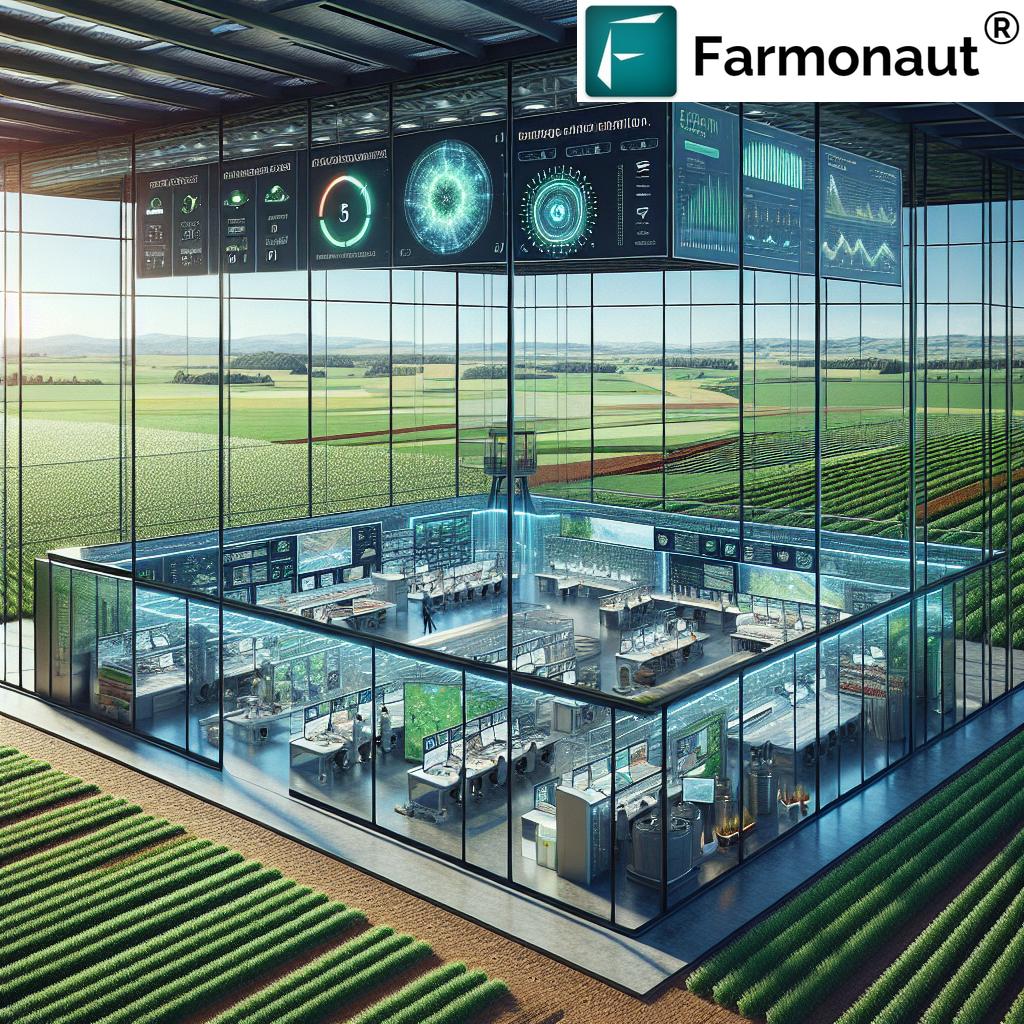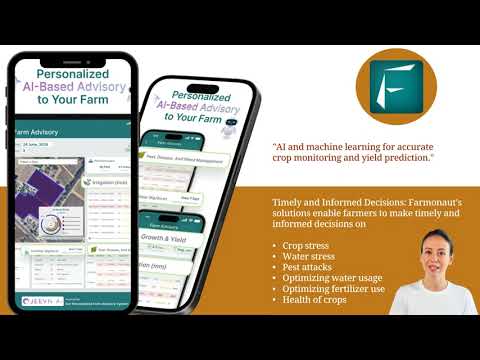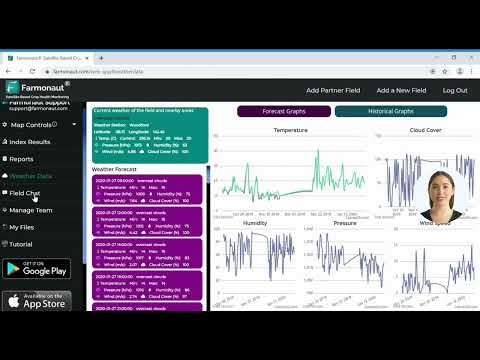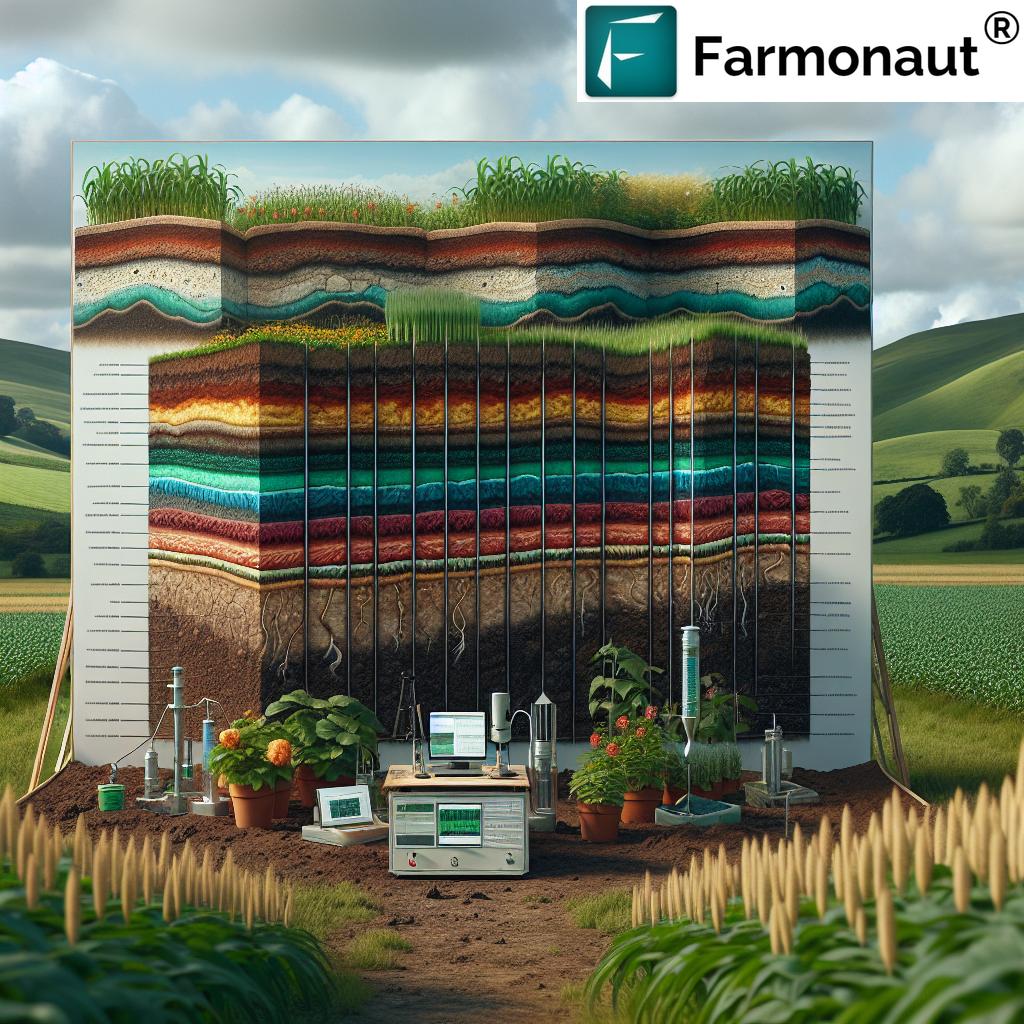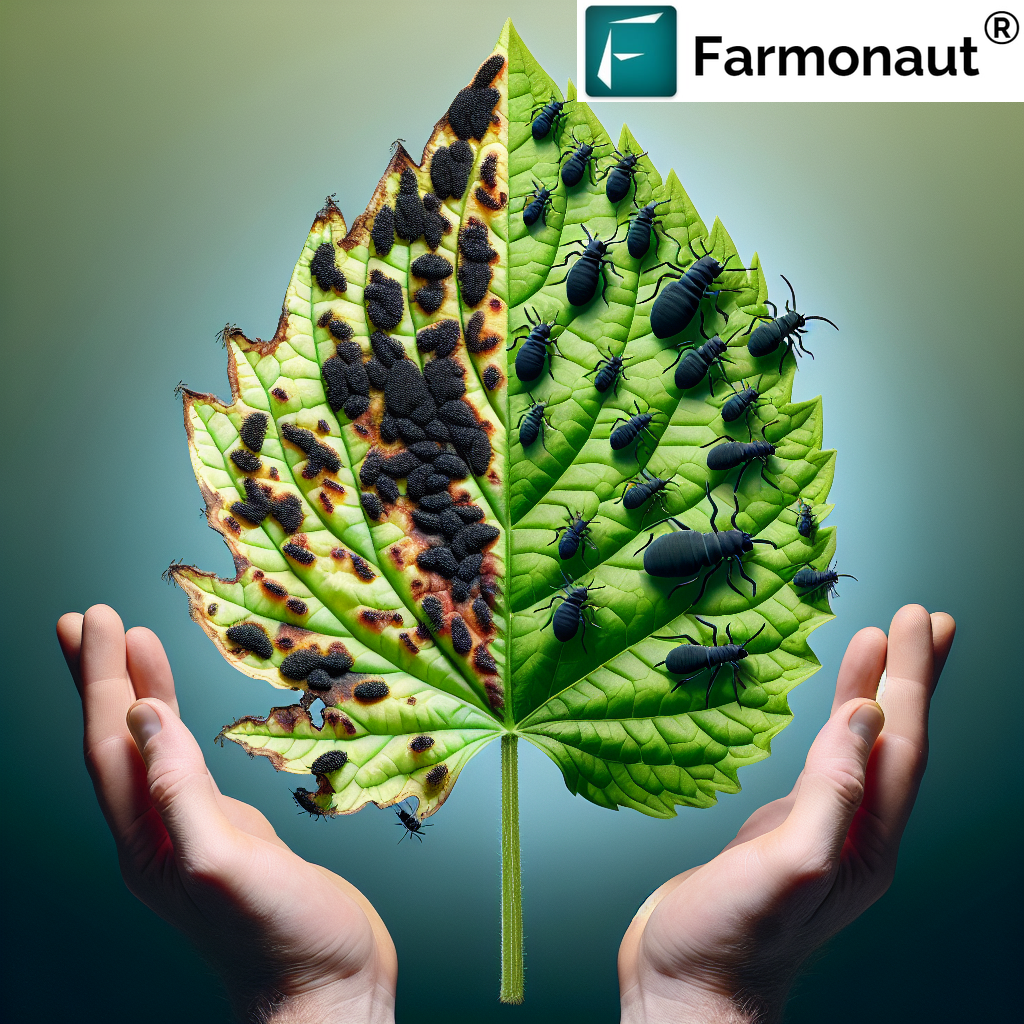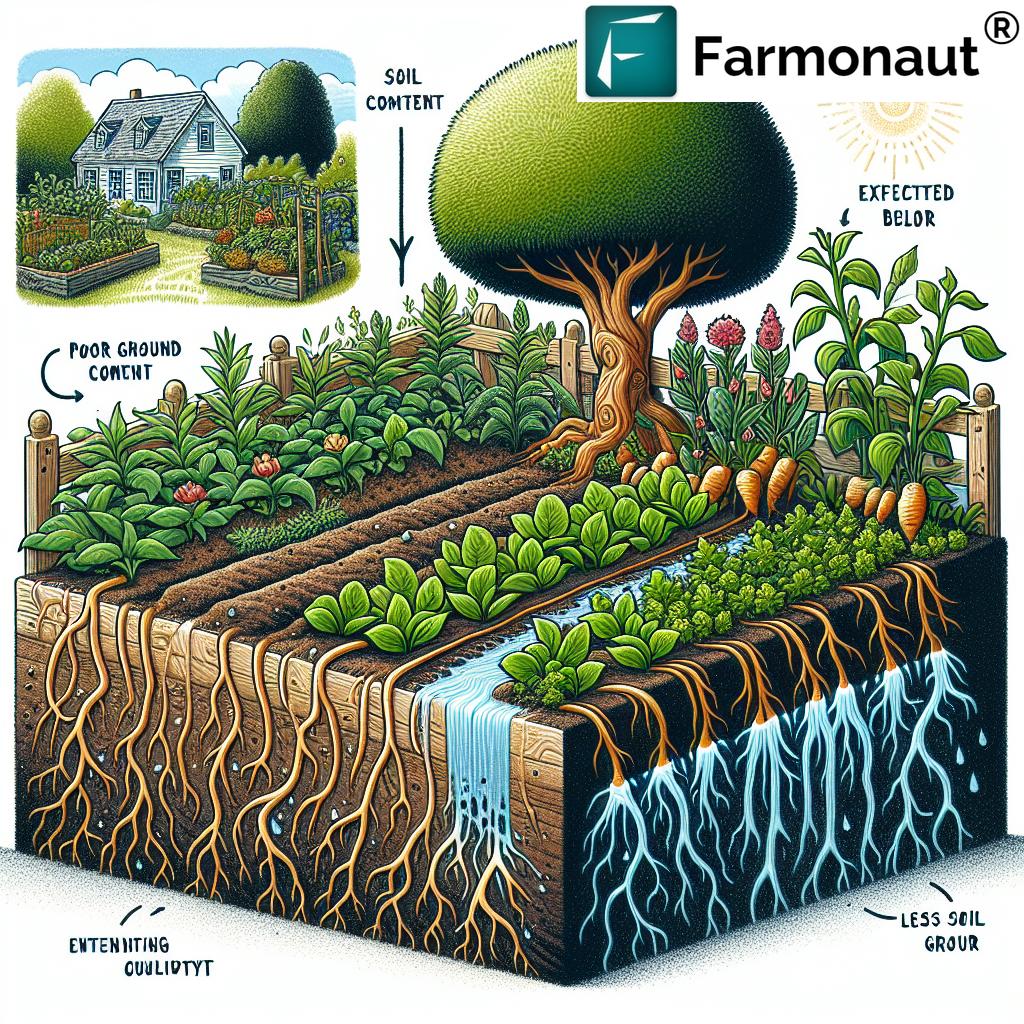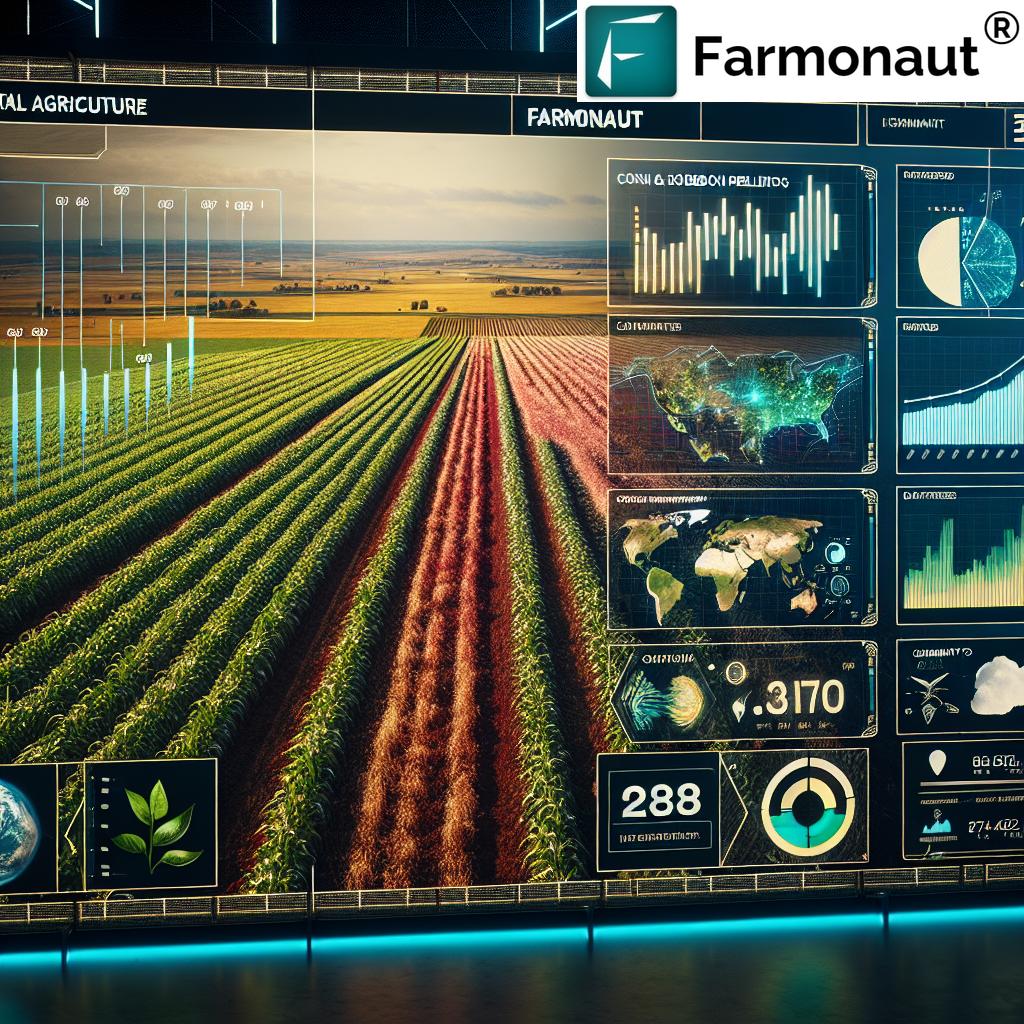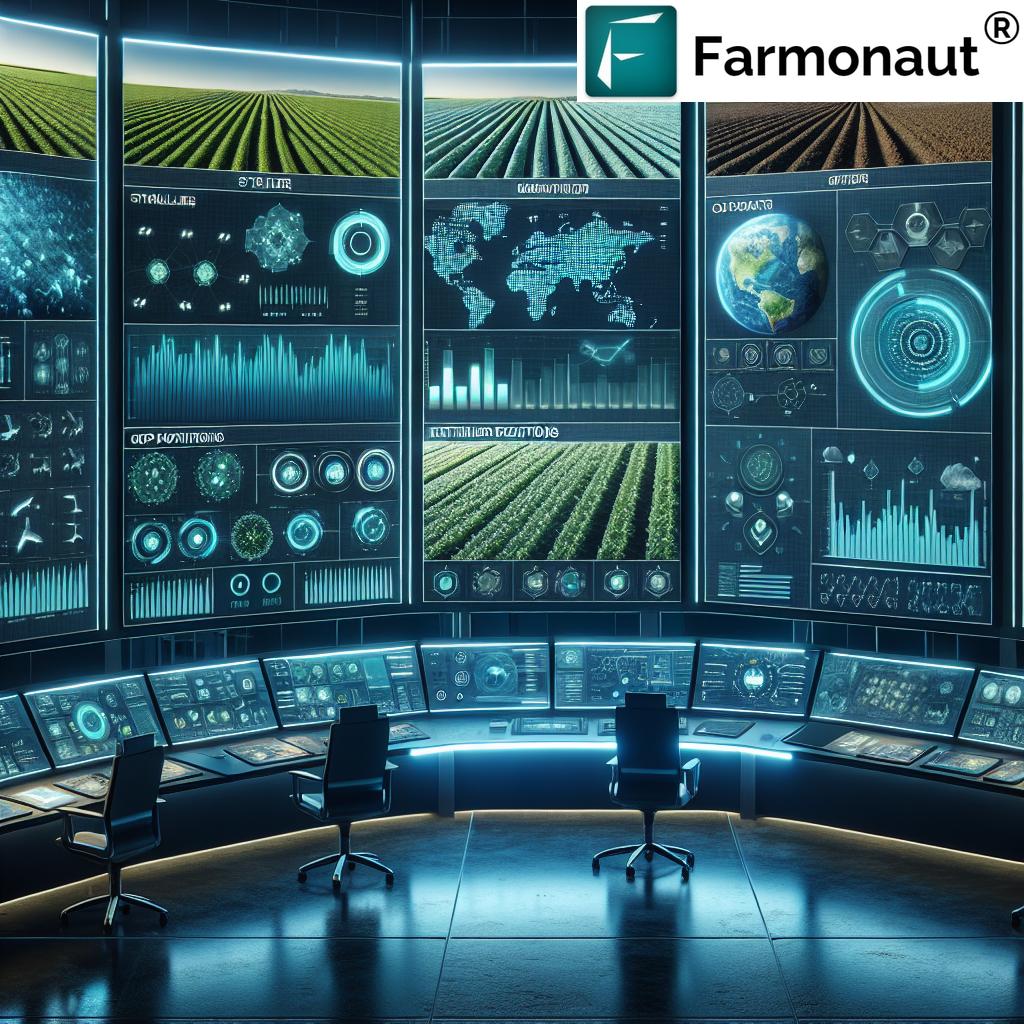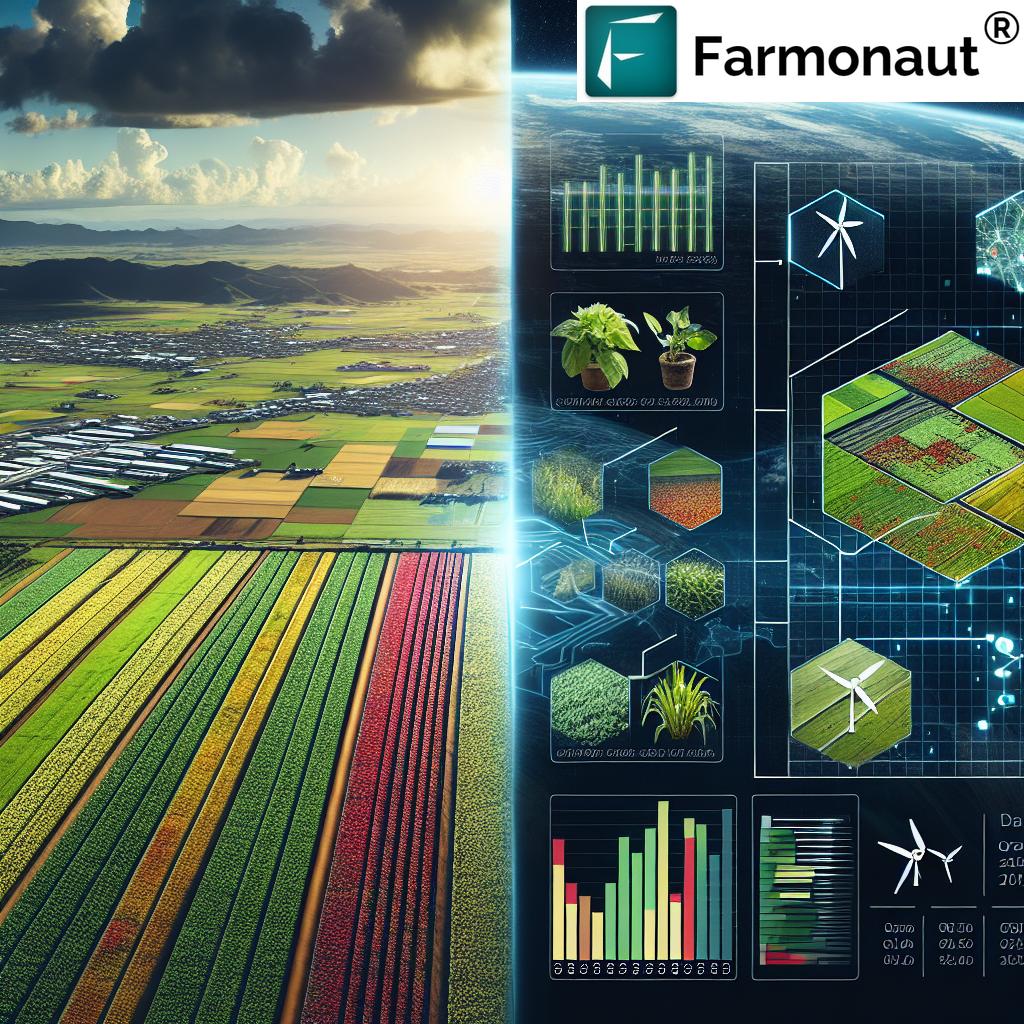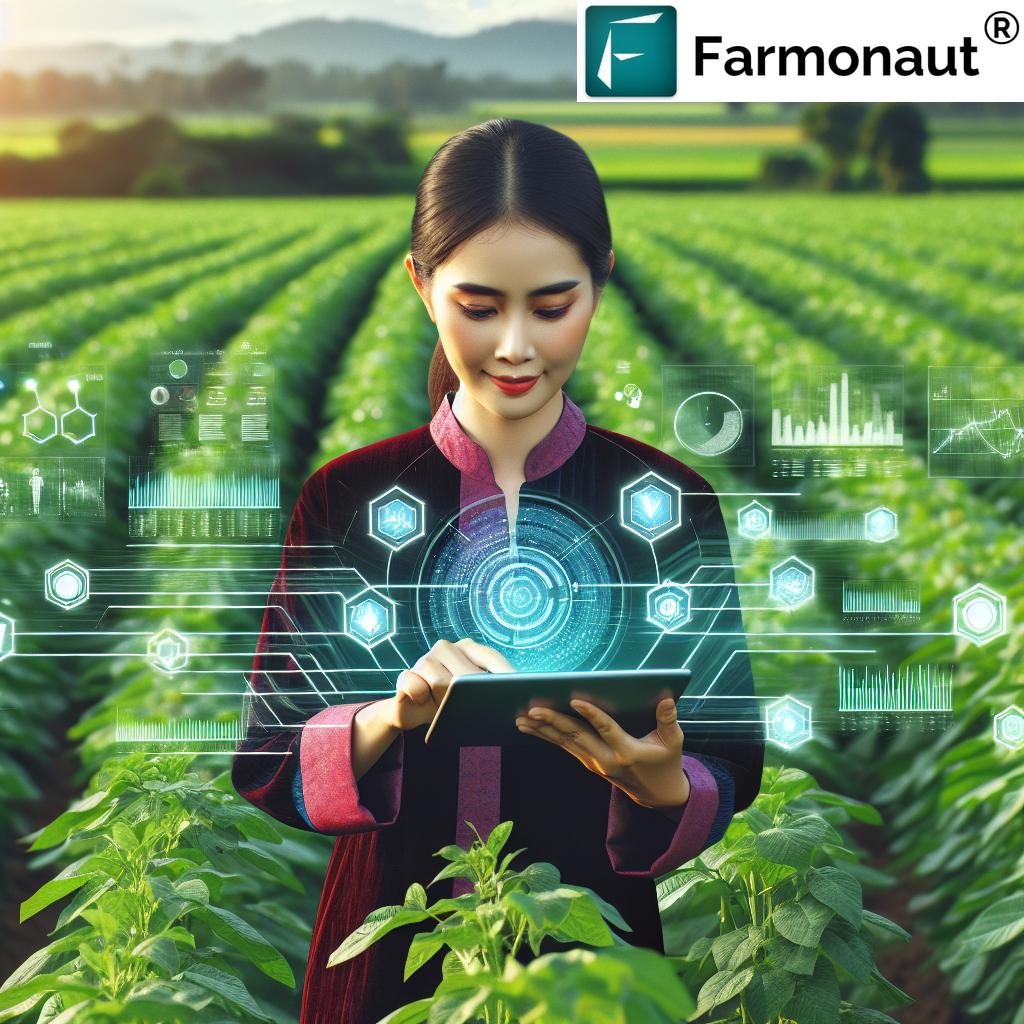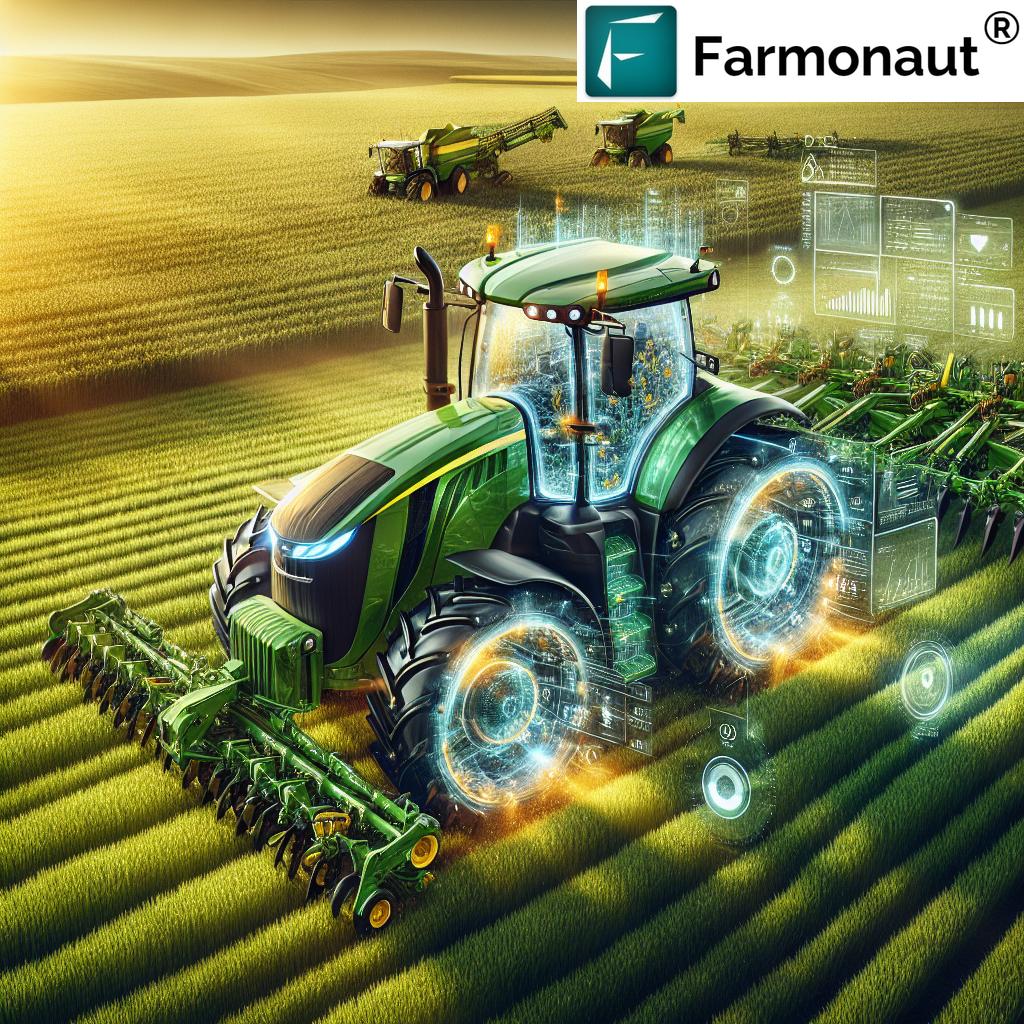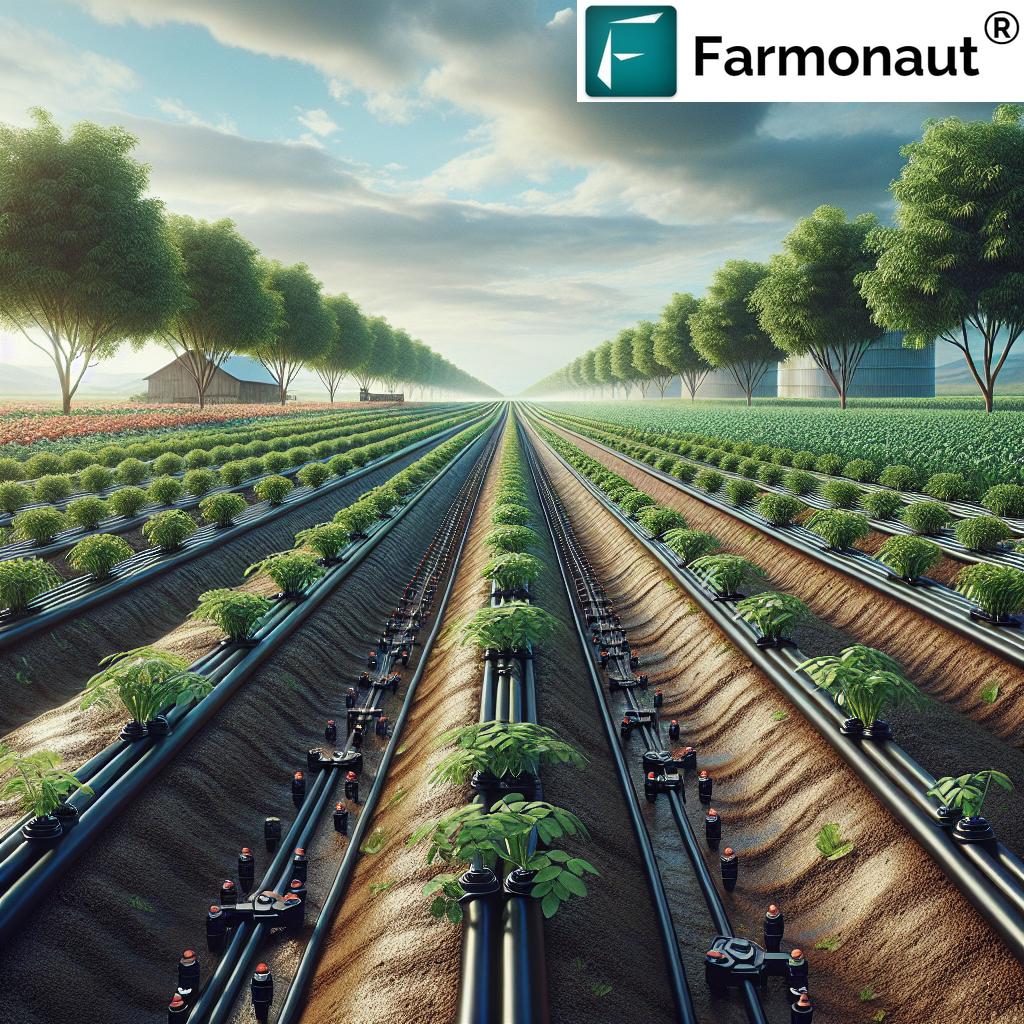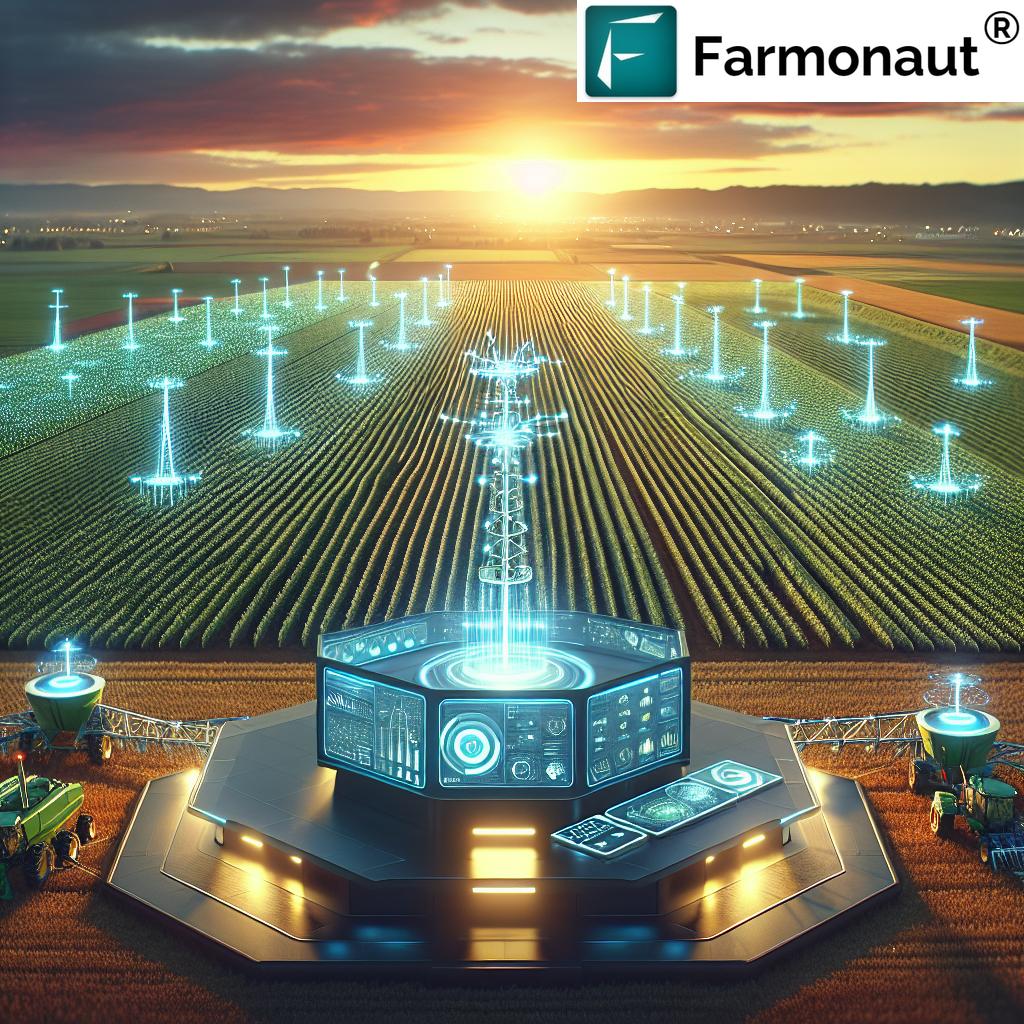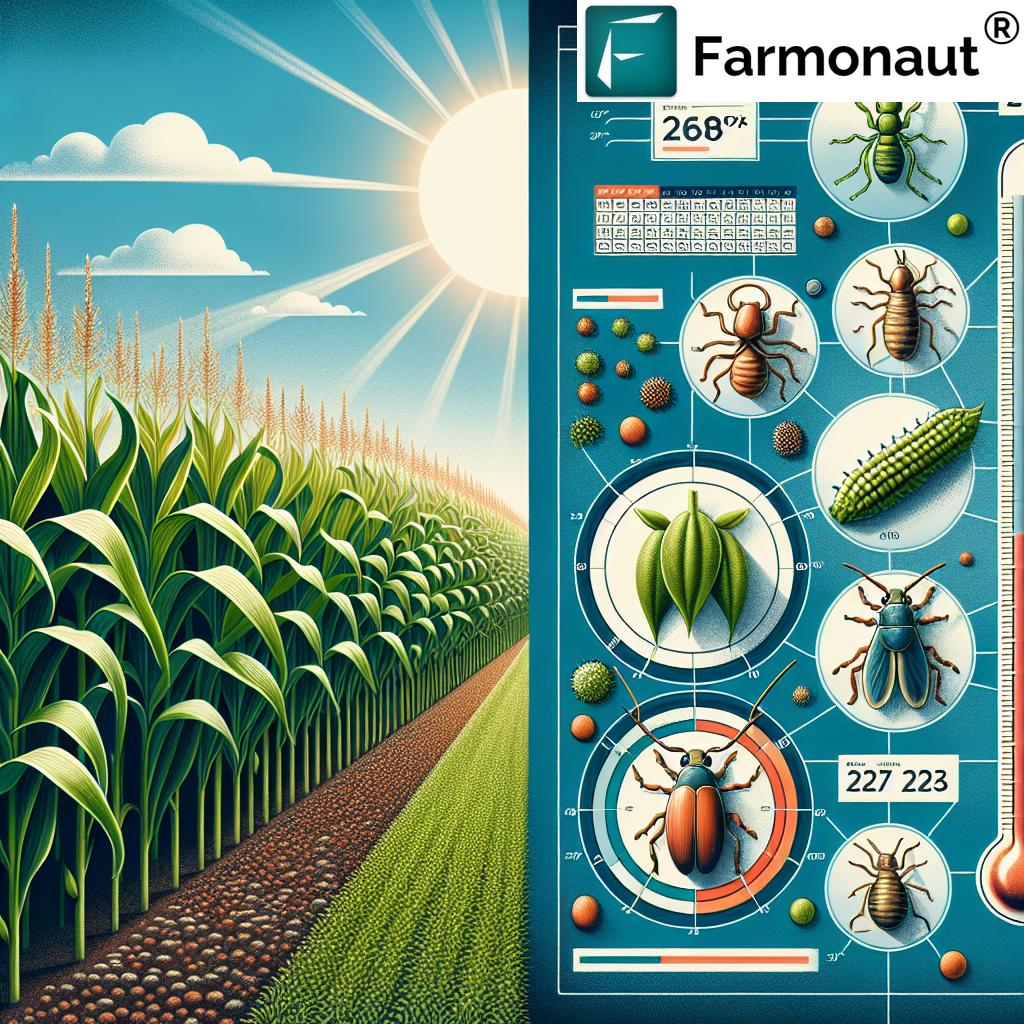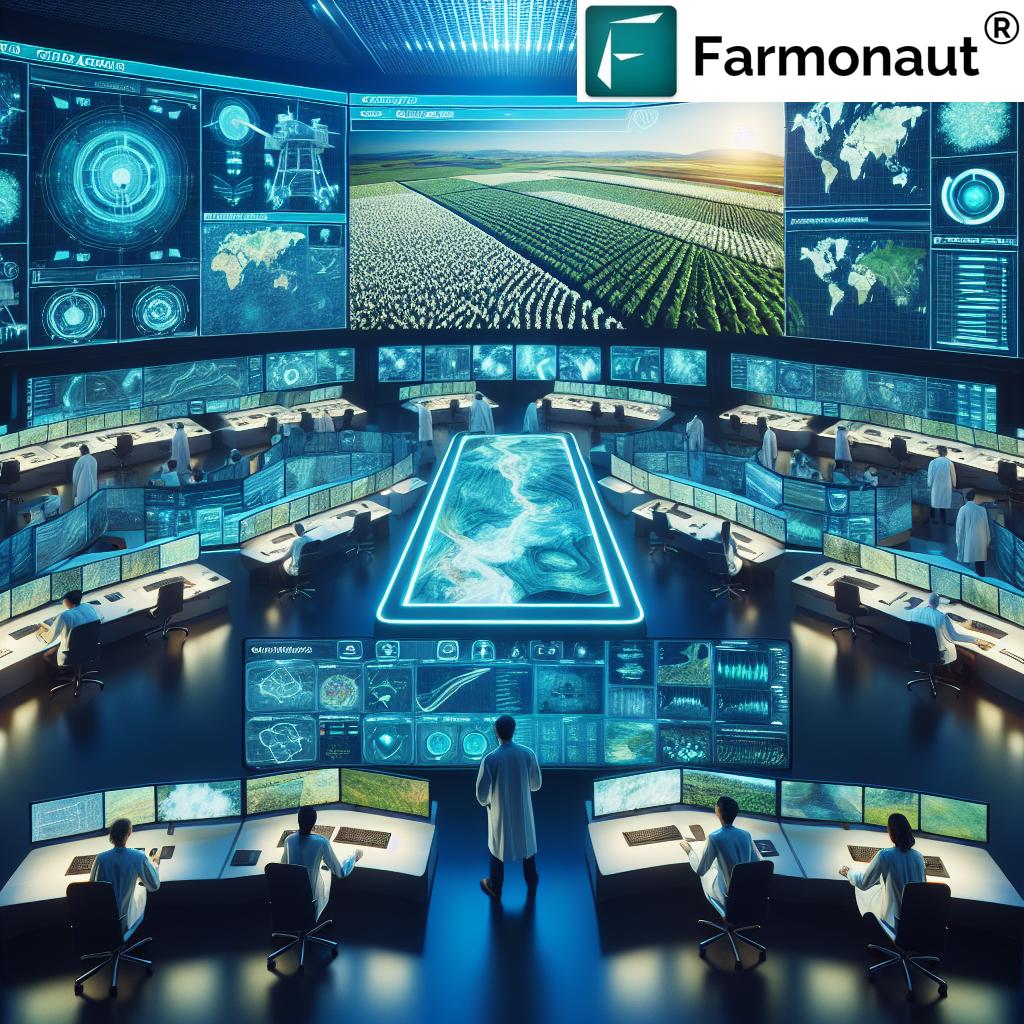Smart Agriculture System: 7 Shocking Tech Upgrades!
Table of Contents
- Introduction to Smart Agriculture
- Did You Know?
- Why Smart Agriculture Matters
- 7 Shocking Smart Agriculture Tech Upgrades
- Comparative Impact & Benefits Table
- Applications of Smart Agriculture Systems
- How Farmonaut Leads the Smart Agriculture Revolution
- Smart Trivia
- Business Model, Benefits, and Subscriptions
- Challenges and Considerations
- Future Outlook: The Road Ahead
- Frequently Asked Questions
- Get Started with Farmonaut
“Smart sensors can reduce water usage in agriculture by up to 30% through real-time soil monitoring.”
Introduction to Smart Agriculture
Smart agriculture, known as precision agriculture, marks a new era for farming worldwide. By integrating advanced technologies such as the Internet of Things (IoT), artificial intelligence (AI), automation, and powerful data-driven solutions, we can now manage our farms with incredible precision and efficiency. In a world challenged by growing food demands, climate variability, and resource constraints, these smart agriculture advancements are not just beneficial—they’re essential.
Farmers, agribusinesses, and even governments increasingly realize the value of smart farming: from optimizing crop yields and minimizing input costs, to adapting sustainable practices that conserve water and reduce environmental impact. By embracing this technological revolution, we not only increase our productivity and efficiency, but also build resilience for the unpredictable future of agriculture.
Why Smart Agriculture Matters: Precision, Productivity & Sustainability
As stewards of agriculture, we’re facing never-before-seen pressures: a booming global population, climate change, shifting weather patterns, labor shortages, and the need to ensure long-term food security. Traditional methods can no longer keep up with these challenges. That’s where smart agriculture shines: it empowers us to make data-driven decisions by leveraging real-time data collection, analysis, and predictive modeling at every stage of farming. Whether it’s via automated tractors, satellite crop monitoring, or AI-driven insights, we can now manage every square meter of our fields and livestock with unprecedented accuracy.
Let’s dive into the 7 shocking tech upgrades reshaping our sector.
Smart Agriculture System: 7 Shocking Tech Upgrades!
From the farm field to the cloud, a suite of breakthrough technologies is driving the evolution of precision farming. Here’s how each one brings transformation:
1. IoT Sensors & Actuators: The Backbone of Smart Agriculture
At the core of any Smart Agriculture System are interconnected IoT devices, including soil sensors, actuators, and wireless modules. These devices collect real-time data on soil moisture, temperature, humidity, and crop health across our fields.
- Precision Farming Technologies: IoT in agriculture ensures accurate resource usage, supplying water or fertilizer only where needed.
- 24/7 Monitoring: These sensors provide continuous crop monitoring solutions and help us detect diseases or pest infestations early.
- Automated Alerts & Response: IoT-based actuators can adjust irrigation or nutrient delivery automatically based on real-time sensor data.
The result? Dramatic reductions in waste, water consumption, and resource usage, while maximizing productivity.
Read more on IoT in agriculture
Image ALT text: Smart agriculture system with IoT sensors for soil and crop monitoring
2. Artificial Intelligence in Farming: Smarter Than Ever
Artificial Intelligence (AI) is revolutionizing how we analyze complex agricultural datasets. AI models and machine learning algorithms identify crop growth patterns, forecast yields, detect diseases, optimize planting schedules, and even predict pest outbreaks based on satellite and sensor data.
- AI-driven Precision Farming: By analyzing multi-source data, we gain actionable insights for better farm management and resource allocation.
- Early Disease Detection: AI can spot subtle signs of disease or stress invisible to the human eye, enabling timely interventions.
- AI in Decision Support: Integrated AI advisory tools like Farmonaut’s Jeevn AI equip us with real-time cultivation advice and predictive analytics.
Benefit: Improved crop health, efficient resource deployment, and cost savings.
Learn about artificial intelligence in farming
3. Automation and Robotics: Changing How We Farm
Farm automation is no longer science fiction—today’s self-driving tractors, robotic harvesters, and automated weeding machines are streamlining labor-intensive tasks while ensuring consistency and efficiency.
- Labor Savings: Automation reduces manual workload and associated labor costs.
- Consistent Results: Machines work tirelessly without fatigue, ensuring uniform planting, weeding, and harvesting.
- Integration with Precision Farming: Automated machinery uses GPS and sensor data for accuracy in field operations.
With robotics, we can cover more ground in less time and allocate human efforts to higher-value activities.
Explore automation and robotics in agriculture
4. Agricultural Drones and UAVs: Our Eyes in the Sky
Unmanned Aerial Vehicles (UAVs), commonly known as agricultural drones, offer an aerial vantage point for monitoring crops and field conditions:
- Aerial Surveys: Equipped with multispectral cameras and sensors, drones rapidly survey large areas, detect crop stress, and assess plant health across fields.
- Spot Checks: Drones help us pinpoint areas needing attention, directing on-ground teams for targeted interventions.
- Data Integration: Drone data feeds into big data analytics in agriculture for comprehensive farm management.
Agricultural drones transform our ability to monitor large or inaccessible fields—making precision farming a reality anywhere.
See how drones and UAVs boost smart agriculture
Image ALT text: Drone surveying farmland for smart agriculture crop monitoring
5. GPS Positioning & Precision Equipment: Accuracy Like Never Before
Global Positioning System (GPS) technology is fundamental to precision farming. It enables field mapping, navigation of equipment, and accurate application of inputs like seed, fertilizer, and pesticide.
- Field Mapping: GPS-based systems help us create exact maps for planting, fertilization, and harvesting, minimizing overlap or missed spots.
- Navigate with Confidence: Tractors and implements follow optimal paths for efficiency and cost reduction.
- Data Recording: All operations are geo-tagged, improving traceability and post-harvest analysis.
GPS’s integration with big data platforms enables us to track farm operations and maximize land use efficiency.
Discover GPS in smart agriculture equipment
6. Big Data Analytics in Agriculture — Making Every Byte Count
The integration of big data into agriculture means we can analyze large datasets from sensors, drones, satellites, machinery, and market feeds. This unlocks game-changing predictive power:
- Predictive Modeling: By processing weather, crop, and soil data, we can predict yield, prevent resource waste, and adapt to climate risks.
- Actionable Decision-Making: Analytics tools help us make informed decisions—what, when, where, and how much to plant, irrigate, or fertilize.
- Resource Optimization: Data-driven management leads to cost savings and greater sustainability.
With easy-to-use interfaces like Farmonaut’s app and API (try the Farmonaut web app), farmers of all scales can access powerful analytics for their fields.
See big data analytics in action
Image ALT text: Big data analytics dashboard visualizing smart agriculture data
7. Blockchain and Traceability: Trustworthy Farm-to-Table Journey
Transparency is crucial for today’s agricultural supply chains. Blockchain technology brings end-to-end traceability, ensuring every stage of the product’s journey—from planting to consumer—is recorded in a tamper-proof ledger.
- Product Authenticity: Blockchain guarantees origin, quality, and safety of food and agricultural products.
- Supply Chain Efficiency: Automated, verifiable records speed up insurance claims, loan approvals, and regulatory compliance.
- Consumer Trust: Brands and consumers benefit from a transparent process with blockchain-based traceability.
Farmonaut’s Blockchain-Based Product Traceability solution empowers us to build transparent, fraud-resistant supply chains.
Benefit: More streamlined logistics, reduced risk, and improved market confidence for everyone in the value chain.
Comparative Impact & Benefits Table: 7 Smart Agriculture Upgrades
| Technology Name | Core Function | Estimated Crop Yield Increase (%) | Water Savings (%) | Cost Savings (%) | Sustainability Impact |
|---|---|---|---|---|---|
| IoT Sensors & Actuators | Real-time soil, crop, and environment monitoring | 10–20 | 25–30 | 15–20 | High |
| AI & Machine Learning | Predictive analytics, disease detection, resource optimization | 15–20 | 10–15 | 15–25 | High |
| Automation & Robotics | Automated planting, weeding, harvesting | 12–18 | 7–12 | 20–25 | Medium |
| Agricultural Drones & UAVs | Aerial surveys, crop health assessment | 8–15 | 10–18 | 8–12 | Medium |
| GPS System | Precise guidance of equipment | 10–14 | 5–10 | 10–15 | Medium |
| Big Data & Analytics | Actionable insights, predictive farm management | 15–20 | 8–16 | 18–22 | High |
| Blockchain Traceability | Supply chain transparency & trust | 3–8 | N/A | 8–13 | High |
These figures represent typical estimates from global implementations, illustrating the immense benefits of each technology for smart agriculture and sustainable food production.
Core Applications of Smart Agriculture
The integration of these 7 upgrades powers a spectrum of transformative applications, including:
- Precision Crop Management: We leverage sensors, AI, and big data to apply water, fertilizers, and pesticides exactly where needed. This reduces waste, lowers input costs, improves crop quality, and minimizes environmental impact.
- Livestock Monitoring: IoT wearable devices track animal health, monitor feeding, and help detect diseases early, boosting livestock productivity and welfare.
- Automated Irrigation Systems: Farmonaut’s platform utilizes real-time soil moisture data from satellites and IoT sensors to automatically adjust irrigation usage—ensuring optimum crop growth while conserving water.
- Supply Chain Optimization: IoT sensors and blockchain help maintain perishable crop and food quality during storage and transportation—reducing losses and ensuring consumer trust. Blockchain further provides product traceability (learn more about traceability).
- Climate Adaptation: Smart agriculture practices supply farmers with weather-adaptive tools and predictive analytics for risk mitigation—directly supporting our response to climate change (read how we track and reduce carbon footprint).
By adopting these innovations, we position our operations—and food supply chains—for greater resilience and sustainability.
How Farmonaut Leads the Smart Agriculture Revolution
Farmonaut stands at the forefront of the smart agriculture transformation, offering accessible, affordable, and advanced solutions for all scales of farming. Here’s how Farmonaut delivers on every aspect of this revolution:
- Satellite-Based Crop Health Monitoring: Our platform leverages Earth observation satellites for real-time vegetation health (NDVI), soil moisture, temperature, and stress detection—delivering actionable crop monitoring solutions straight to your smartphone or computer. No additional hardware needed!
- AI-Based Farm Advisory: With Jeevn AI, users receive expert, data-backed advice on crop management, tailored planting schedules, and disease prediction based on multispectral satellite and field data.
- Blockchain Traceability: Farmonaut enables transparent, secure product tracing so every harvest is certified and trusted. Learn more on our product traceability page.
- Resource, Fleet & Carbon Management: GPS-linked resource tools and fleet management make it easy to optimize equipment and labor, reduce operational costs, and track your carbon footprint.
- Financial Support: Our satellite-supported crop loan and insurance verification streamlines access to agricultural finance by providing remote, fraud-resistant field verification for lenders and insurers.
- Large Scale Farm Management: Whether you manage plantations, cooperatives, or state-wide programs, Farmonaut supports large-scale farm management and monitoring for government and corporate users.
Farmonaut is mission-driven to democratize smart agriculture: users range from smallholder farmers to large agribusinesses, NGOs, and government agencies across the globe.
Explore the Farmonaut API:
Access satellite and weather data for your own agtech solution or data project.
Farmonaut API |
API Developer Docs
“AI-driven precision farming has increased crop yields by as much as 20% in tech-adopting farms worldwide.”
Business Model, Benefits, and Farmonaut Subscription Options
Farmonaut provides data-driven farm management under a scalable, subscription-based model. Users pay only for what they need:
- Affordable Pricing: Flexible options based on hectares monitored and satellite update frequency.
- Easy Accessibility: Available for Android, iOS, web browser, and API integration worldwide.
- For All Sizes: Whether you’re a single-farm owner, part of a cooperative, or managing agro-corporates—Farmonaut scales to fit your requirements.
- Secure & Transparent: Blockchain and private data management help maintain privacy, ensuring secure operations.
Find the right subscription:
Challenges and Considerations in Smart Agriculture Adoption
While the benefits are clear, several challenges must be managed as we transform our agricultural systems:
- High Initial Investment: Although Farmonaut reduces hardware requirements, some solutions require upfront costs, especially for specialized automation or field sensors.
- Data Privacy and Security: Collection and sharing of farm data requires robust cybersecurity measures and respect for user privacy.
- Technological Literacy: Training is essential so farmers and staff confidently use new devices and interpret insights.
- Infrastructure Needs: Reliable internet connectivity, electrical power, and, in rural regions, satellite coverage, are prerequisites for seamless operation. Fortunately, Farmonaut’s remote sensing works in even data-poor areas.
Despite these considerations, steadily advancing adoption and falling costs mean smart agriculture is more accessible than ever.
Future Outlook: The Road Ahead for Smart Agriculture
The future of smart agriculture is rich with promise. As artificial intelligence, robotics, and big data analytics mature further, and as wider adoption brings down costs and builds skills, every farmer and agribusiness can boost productivity and sustainability. Upcoming trends include:
- Ultra-precise automation and fully autonomous field machinery
- Expansion of precision livestock farming with AI-driven animal health analytics
- Advanced climate adaptation models and real-time risk assessment
- Wider use of blockchain for certification and transparency
- Next-gen sensor arrays offering even deeper soil, nutrient, and water data
Armed with these smart agriculture tools and mindsets, we can meet the food demands of the future—sustainably, efficiently, and profitably.
Frequently Asked Questions (FAQ) on Smart Agriculture
1. What is smart agriculture?
Smart agriculture, or precision agriculture, involves integrating advanced technologies—like IoT, AI, automation, and satellite monitoring—into traditional farming to boost crop yields, reduce costs, save resources, and enhance sustainability.
2. How do IoT sensors benefit farm management?
IoT in agriculture uses sensors and actuators to gather data on soil moisture, temperature, and climate, enabling precise irrigation, fertilization, and pest control—minimizing waste and maximizing productivity.
3. What is the role of AI in farming?
Artificial intelligence in farming powers predictive analytics, disease detection, yield forecasting, and data-driven decision-making, allowing us to identify problems early and optimize every operation on the field.
4. How does Farmonaut make precision agriculture affordable?
Farmonaut removes the need for expensive on-site hardware by leveraging satellite imagery for real-time crop, field, and resource monitoring. Their platform offers tiered subscription pricing, making smart agriculture accessible even for small and medium farms.
5. Why is traceability important in smart agriculture?
Blockchain-based traceability confirms the authenticity and safety of products, combats fraud, and builds consumer trust—all while making compliance and supply chain auditing lightning fast.
6. How do I get started with a smart agriculture platform like Farmonaut?
Start by registering on the Farmonaut web or mobile app. Map your fields, access crop health monitoring, and explore powerful tools for fleet, resource, and carbon management. You can also integrate Farmonaut APIs into your own apps or business.
Get Started: Experience the Future of Smart Agriculture
Are you ready to transform your approach to farming, maximize your yields, conserve resources, and build a sustainable future? Experience smart agriculture today with Farmonaut’s comprehensive, satellite-powered precision farming platform.
API Access:
Build your own agtech solutions or enhance your business intelligence with direct API data streams from Farmonaut API and comprehensive developer documentation.
Let’s plant the seeds of tomorrow, together. Embrace smart agriculture, leverage precision farming technologies, and make sustainability part of your legacy!



